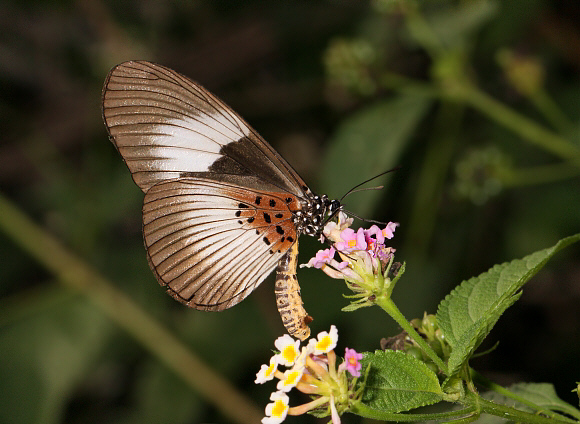
Introduction
There are 228 Acraea species, of which 223 are Afrotropical in distribution. The majority are found in the forests and savannahs of East Africa, while about 60 are found in West Africa. Beyond Africa a further 5 species occur in the Oriental region, and another is found in Australia / New Guinea. In the neotropical region there are 50 additional species, but these are normally placed in the genera Actinote, Altinote and Abananote due to differences in venation and genitalia.
All Acraea species have elongate forewings and rounded hindwings. The wings are thinly scaled and in many species are semi-transparent. The scales wear off very easily so that insects more than 4 or 5 days old have a glassy or greasy appearance. The majority of species have a predominantly brownish or greyish ground colour, marked with bands or patches of red or orange. The basal area of the underside hindwings of most species is marked with a pattern of small black spots. In many, including alcinoe, these spots also appear on the upper surface of the wings.
Some of the larger Acraea species including alcinoe were formerly placed in the genus Bematistes, hence the vernacular name Black-sot Bematistes.
Acraea alcinoe is found across most of sub-Saharan Africa.

Habitats
This is a fairly common and widespread species. It is found in both primary and degraded forest, and is found more commonly in shady areas than in the open sunshine.
Lifecycle
The only recorded larval foodplant is Adenia ( Passifloraceae ). The eggs are laid in heaps on the underside of leaves.
Adult behaviour
The butterflies are usually seen singly, flying along forest edges, pausing here and there to nectar at flowering bushes and shrubs, including Lantana.

